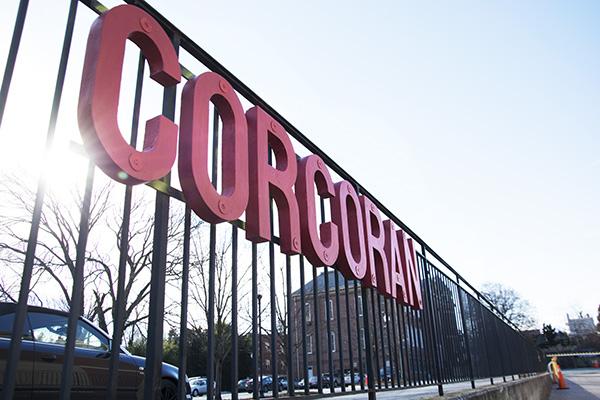Behind the Fillmore building’s rustic exterior and double-hung windows are rooms with high ceilings and exposed brick walls.
The windows allow light to flood into the classrooms and laboratories throughout the day, said Mark Lowham, a managing partner at TTR Sotheby’s International Realty, the firm tasked with selling the 122-year-old building in the Georgetown neighborhood for GW.
Lowham is part of a team looking to make a $14 million sale on the property, which the University acquired last year as part of its merger with the Corcoran College of Art + Design. GW expects to start entertaining offers for the Fillmore, which has a $2.4 million mortgage, in April. Students will continue to take classes in the building until the end of the spring semester.
Lowham said the historic building will likely attract potential buyers with varying ideas for how to use the space.
“The future potential use covers a wide range of opportunities, which we find very interesting,” Lowham said. “It could lend itself as an independent school, charter school or an institutional type of use, but it’s also zoned for residential use.”
The money that GW hopes to make from the sale would cover about 18 percent of the total costs to renovate the Corcoran’s 17th Street building, where a majority of Corcoran classes are held. University President Steven Knapp said last summer that it would cost about $80 million to fully renovate the about 115-year-old building.
Officials have said that the University plans to spend $25 million on the first phase of renovations to fix a leaky roof and outdated heating and cooling systems. GW received $43 million from the college, most of which will help cover renovations, and also started fundraising to pay for the rest of the costs.
TTR Sotheby’s will have its offices across the world market the property, which could make for a more competitive bidding process, Lowham said.
The company released information online about the building last week, including floor plans, photos and a video tour led by trustee Cynthia Steele Vance, who is the host of the Washington Luxury Channel.
“The opportunities for this property are endless,” she says in the video. “They range from residential development to a private school.”
The Fillmore was first built for D.C. Public Schools, and then became an arts center for nearby schools. The Corcoran bought the building from the city in 1998.
Its patina – a thin, protective layer on the facade – and circular turret on the northwest corner are features that buyers will not find on newer buildings, Lowham said.
The 54,000-square-foot building sits on an acre and a half of land, which Lowham said makes it even more unique to the area. Located between 34th and 25th streets in Georgetown, it sits near a row of townhouses, but is also just a block away from a Safeway grocery store.
“They create a very unique environment that I think will appeal to a wide range of users. And despite the fact that its a 19th-century building, it has been maintained exceedingly well,” he said.
But because the Fillmore might be more difficult to maintain, with its aging, exposed brick walls, some buyers could be discouraged, said Itzhak Ben-David, an assistant professor of finance who researches real estate at the Ohio State University’s Fisher College of Business.
The best way to capitalize on selling the property is to find potential buyers who appreciate historic buildings and can stomach the long process of renovations, Ben-David said.
“These factors reduce the price of the value in the eyes of the investor,” he said. “On the other hand, old buildings have some charm and are unique and are sometimes landmarks, which increases the value.”
The Corcoran put the Fillmore on the market in 2010 and signed a purchase and sale agreement with a company that had planned to build mid-market condominiums on the site, but the deal fell through about a month later.
GW’s agreement with the Corcoran stipulates that funds from the sale of the Fillmore building will support the arts school, which GW renamed the Corcoran School of the Arts and Design this year.








